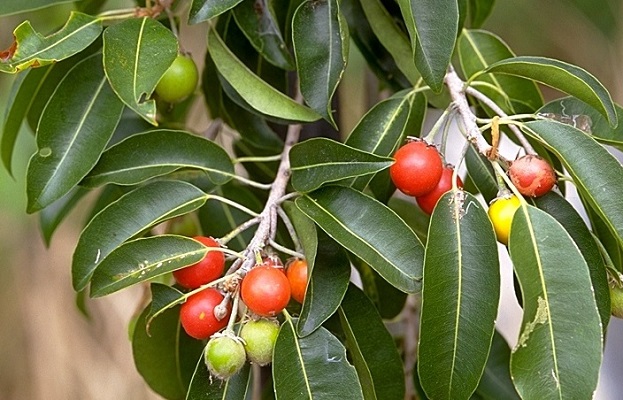On This Page
PUSHKARAMULA –Inula racemosa
Introduction
Pushkaramula is commonly known as Oriss root. The root of this plant is simiar to the roots of Lotus, hence got the name Pushkaraula. The plant grows near water or marshy places so it is known as Poushkaram. It is also known as Vatahva as the plant cures Vatika diseases.
Dr.Gupta’s IAFA has been continuously working on the plantPushkaramula for discovering more medicinal properties the plant. Our experts found out that the plant possesses antifungal, anti microbial, antilaval, hyperglycaemia, cytotoxicity, anti-diabetic, antioxidant and hepatoprotective activity. The Methanolic extrct of Inula racemosa roots shows antifungal activity. Hydroalcoholic extract of roots of Inula recemosa roots exhibits hepatoprotective and anntiproliferative activities.
Action of Pushkaramula – Inula racemosain Allergies
IAFA has been conducting various studies on Pushkaramula found out the antiallergic and anti-inflammatory actions of the plant. The various chemical constituents present in this plant shows anti-inflammatory activity. Pushkaramula is very useful in various allergic conditions because of the phytoconstituents present in it.
Vernacular Names
| Sanskrit Name | Pushkaramula |
| Hindi Name | Pushkaramul |
| English Name | Oriss root |
| Malayalam Name | Pushkaramulam |
| Kannada Name | Pushkaramula |
| Telungu Name | Pushkaramoolamu |
Botanical Name
Inula racemosa
Family
Asteraceae
Morphology of Pushkaramula – Inula racemosa
- Perennial plant
- Tall stout herb
- Stem – rough and grooved
- Leaves- leathery, basal leaves are elliptic-lance shaped and stem leaves are oblong
- Flowers-
- Fruits – achenes
Ayurveda reference of Pushkaramula – Inula racemosa

Geographical distribution of Pushkaramula – Inula racemosa
The plant occurs in temperate areas of Kashmir, Himachal Pradesh, and Uttarakhand in India and it extends up to Iran, Afghanistan, Baluchistan, and Europe etc.
Phytoconstituents of Pushkaramula – Inula racemosa
Thephytoconstituents present in the plant are inunolide, lantalactone, isoalantalactone, dihydro isoalanlactone, dihydroinundide, neo- alantalactone, inunolise, sesqiterpene, octadecanoic acid etc.
Parts used of Pushkaramula – Inula racemosa
- Root
Dosage of Pushkaramula – Inula racemosa
- Root powder – 1-3 gms
Medicinal Properties of Pushkaramula – Inula racemosa
- Vataghna –Alleviates Vata
- Kaphaghna – Alleviates Kapha
- Jvaraghna – Alleviates Fever
- Sothaghna – relieves swelling
- Ruchya – Improves appetite
- Swasghna – Relieves asthma
- Vranaropana – Cures ulcers
- Dipana – Increases the secreation of digestive juices
- Pachana- Helps to digest the undigested food.

Have A Health Issue?
Consult Online
- Dr. Sahil Gupta (B.A.M.S., M.H.A.)
Ayurvedic Allergy Specialist
CEO & Founder of IAFA®
Home remedies of Pushkaramula – Inula racemosa
In Ayurveda the treatment of different kinds of diseases are done by naturally availing non toxic drugs. We are continuously working on these plants to find out its pharmacological actions. IAFA have done so many studies on the plant Pushkaramula and found out that it has wide range of actions. Some of the home remedies are given below.
- Hiccups (Hikka– 3g of root powder is taken along with hot water for 2 days.
- Asthma(Swasa)-3 gm of root powder is taken alng with hot water for 5 days.
- Anorexia (Aruchi) –2 gm of root powder is taken along with honey for 3 days.
- Cough (Kasa)– 3 gm of root powder is mixed in the decoction of Dasamoola and taken internally for 5 days
- Toothache – 2 gm of root powder along with turmeric powder and honey applied over the affected gum area of tooth.
- Swelling (Sotha)– Paste of root is applied over affected area for 3 days.
- Skin diseases(Tvak roga)– 20gm of root powder mixed with 200 ml of water, boiled and reduced to 60 ml and taken internally for 7 days.
- Pain(Vedana)– 10 gm of root powder is taken along with hot water for 3 days
Dr. Gupta’s IAFA provides safe, pure and non toxic Ayurvedic medicines. Our treatment protocols are completely based on Ayurvedic principles. According to Ayurveda each and every plants in the world has its own medicinal properties. Samhitas, Ayurvedic texts explains the properties and actions of almost all the plants. We are mainly focus on alleviating allergic disorders by using naturally available herbs which have less to no side effects. We can assure the safety of our customers as we are subjecting our products to various tests.
Reach IAFA for safe herbal remedies for all your ailments!!!
Was this Page Helpful?
Read More Articles

Kasini (Cichorium intybus)
Know about the uses, benefits, and medicinal properties of Chicory, Kasini (Cichorium…









